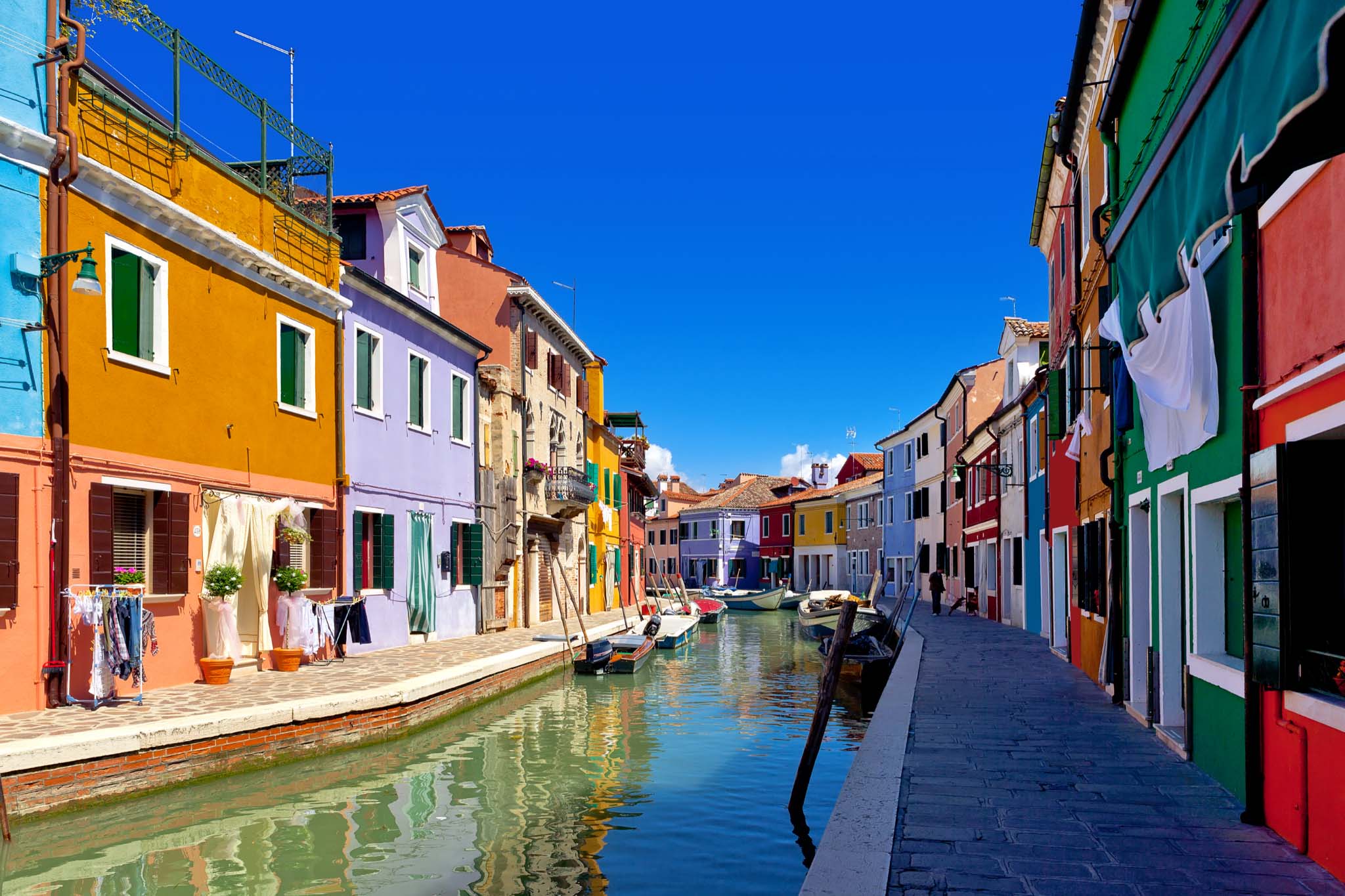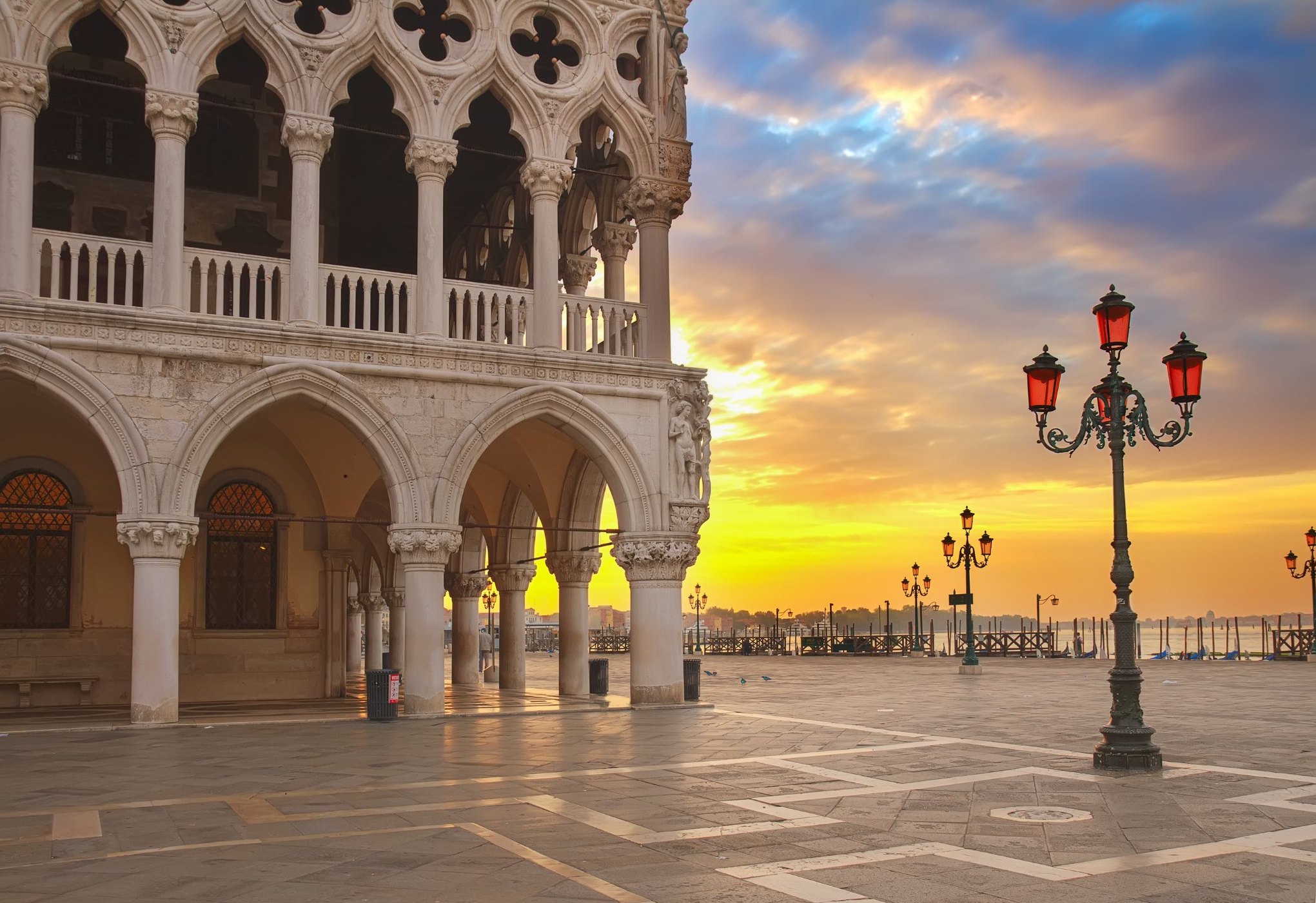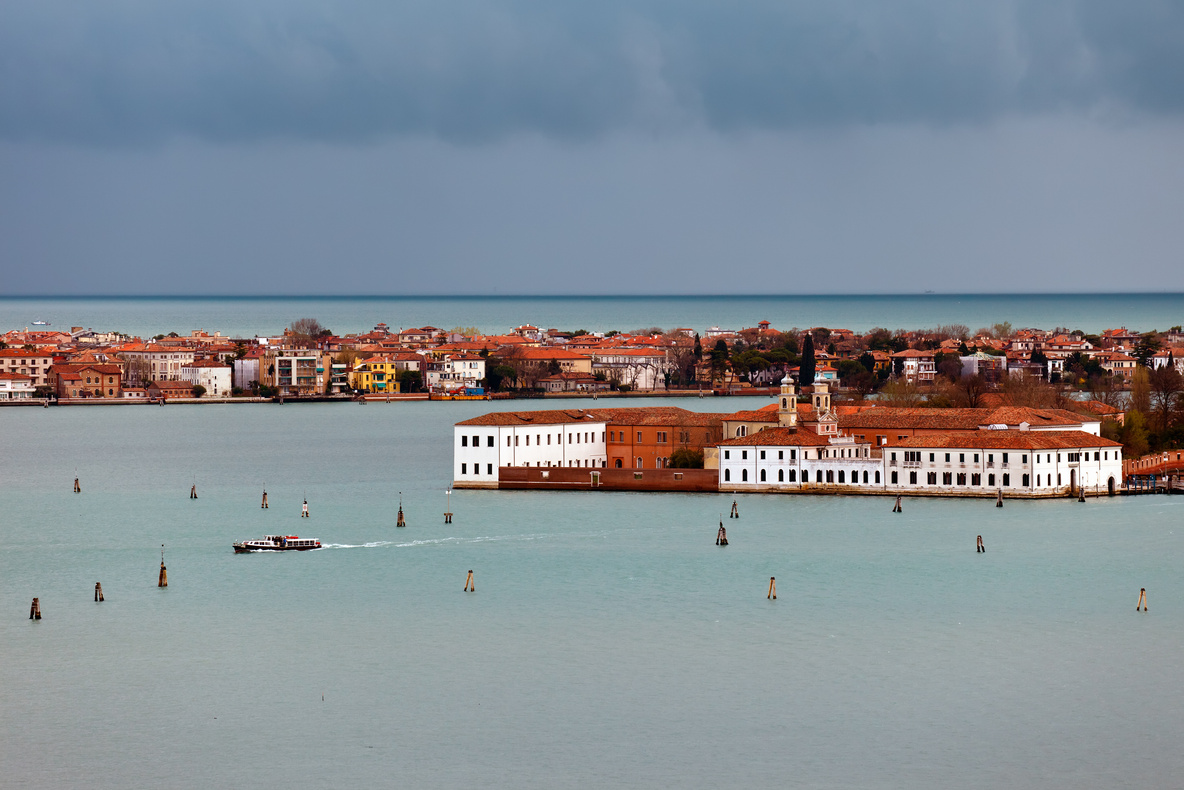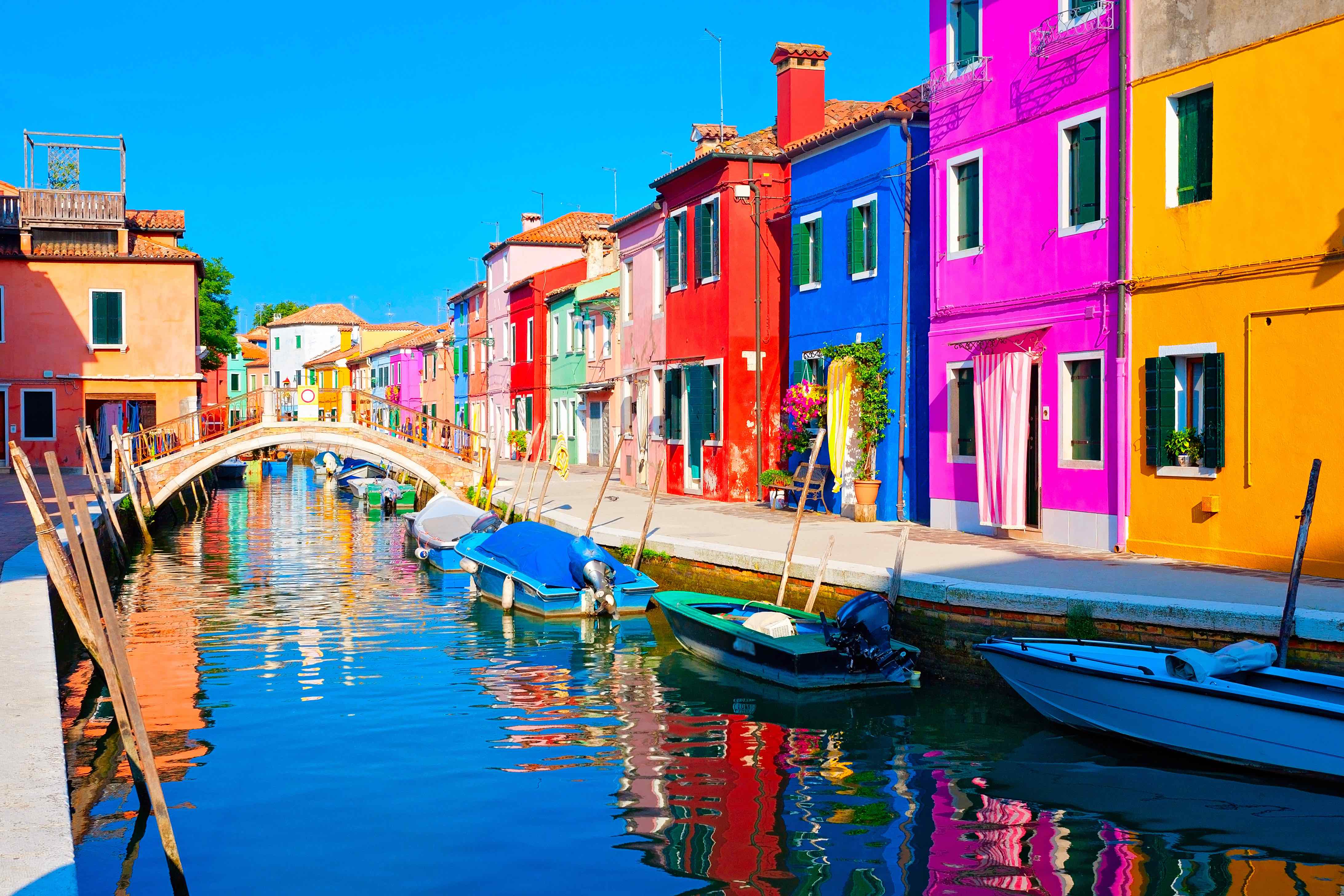Treviso is a city that captivates with its discreet elegance. It is often overshadowed by its neighbours Venice and Verona, but it’s really one of Veneto’s best treasures, with its medieval old town, picturesque canals, lively markets and a tradition of food and wine that has something for every palate.
Piazza dei Signori and Palazzo dei Trecento: the vibrant hub of the city
Any visit to Treviso should start from Piazza dei Signori, the heart of city life. Surrounded by elegant arcades and historic cafés, this pizza has been the social and political heart of the city since the Middle Ages. The first building to notice is the majestic Palazzo dei Trecento, a 13th-century building that once housed the municipal assembly and still dominates with its grandeur.
Nearby, you can also see the Torre Civica and the neo-Gothic Palazzo del Podestà. In the evening, bathed in the atmospheric golden light of the sunset, it becomes the perfect setting for an aperitif with a Spritz or excellent glass of Prosecco DOCG – the pride of the Treviso province. In the piazza, the Vecia Hosteria dai Naneti is a good choice.
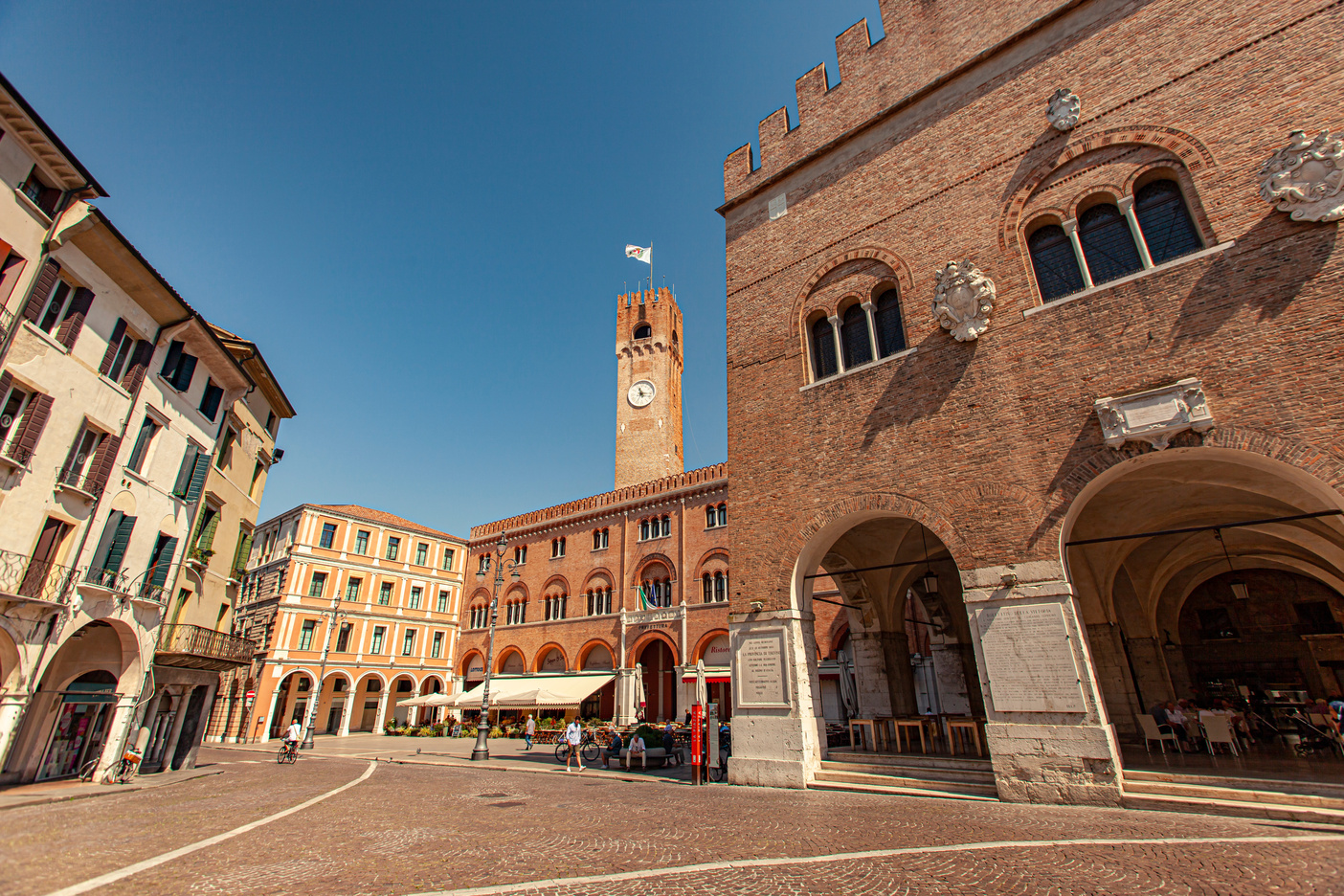
The Buranelli Canal: the little Venice of Treviso
Treviso is one of the many evocative ‘cities of water’ of the north-east due to its numerous canals that criss-cross the historic centre. One of the most picturesque is the Canale dei Buranelli, so called as in the 16th century it housed the homes of fish sellers from the island of Burano in the Venetian lagoon. Take a walk along this waterway to immerse yourself in a picture-postcard Treviso: old mills, small stone bridges, pastel-coloured houses and small flower-decked balconies create a romantic, timeless setting. Towards the end of the canal, the small Loggia dei Cavalieri was once a meeting place for medieval nobility and now is one of the most enchanting corners of the city. This irregularly shaped frescoed loggia was built in the 13th century, at the intersection of the north-south and east-west roads. It was where the city’s nobles delighted in playing chess and is unique in that it was built for neither military nor religious purposes.
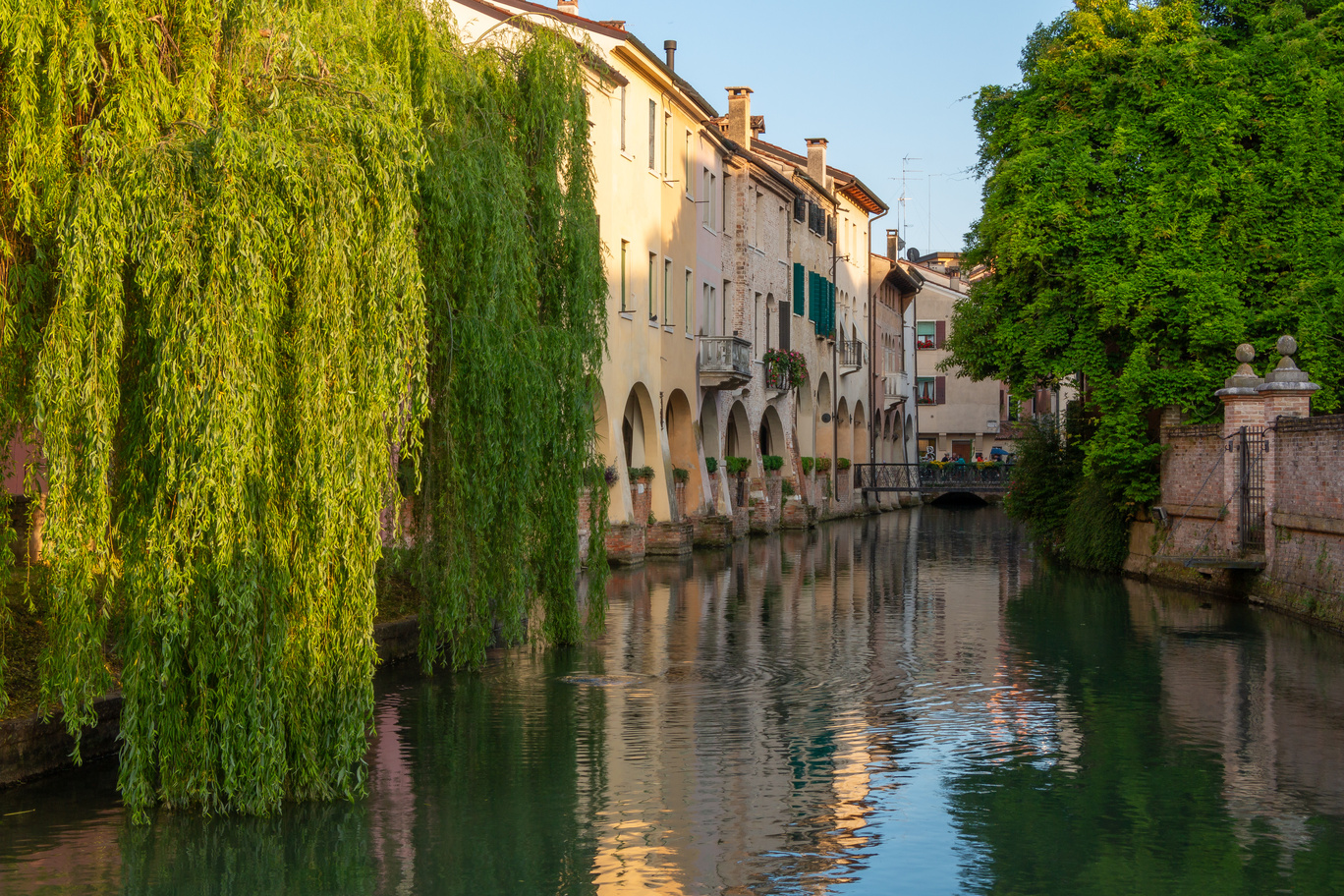
The Cathedral and the Malchiostro Chapel: the artistic face of Treviso
The cathedral dedicated to St Peter shows a mixture of architectural styles, ranging from Romanesque to Neoclassical, and was built on top of an ancient early Christian basilica, the foundations of which are still visible in the crypt.
The imposing colonnaded façade, built in the 18th century, gives the cathedral a solemn and monumental appearance, but it hides a surprisingly rich interior. The soft light that filters through the windows creates flickering shadows and reflections on the decorations, imparting an atmospheric patina that will be engraved on your memory. The masterpiece, however, is yet to come.
The artistic highlight of the cathedral is its Malchiostro Chapel, a corner of extraordinary beauty that houses one of the city’s most precious masterpieces: Titian’s Annunciation.
This work, created by the great Venetian master in 1520, is an explosion of light and colour. The scene depicts the Archangel Gabriel announcing the birth of Christ to the Virgin Mary. The masterful use of perspective and contrasting colours gives the composition a unique sense of depth and movement. The expressiveness of the faces, the details of the robes and the golden luminosity that envelops the scene are testament to Titian’s genius and his ability to convey emotion through colour. Make sure you visit the crypt and see the relics of San Liberale, patron saint of Treviso, and the ancient columns with frescoes telling of the cathedral’s long history.
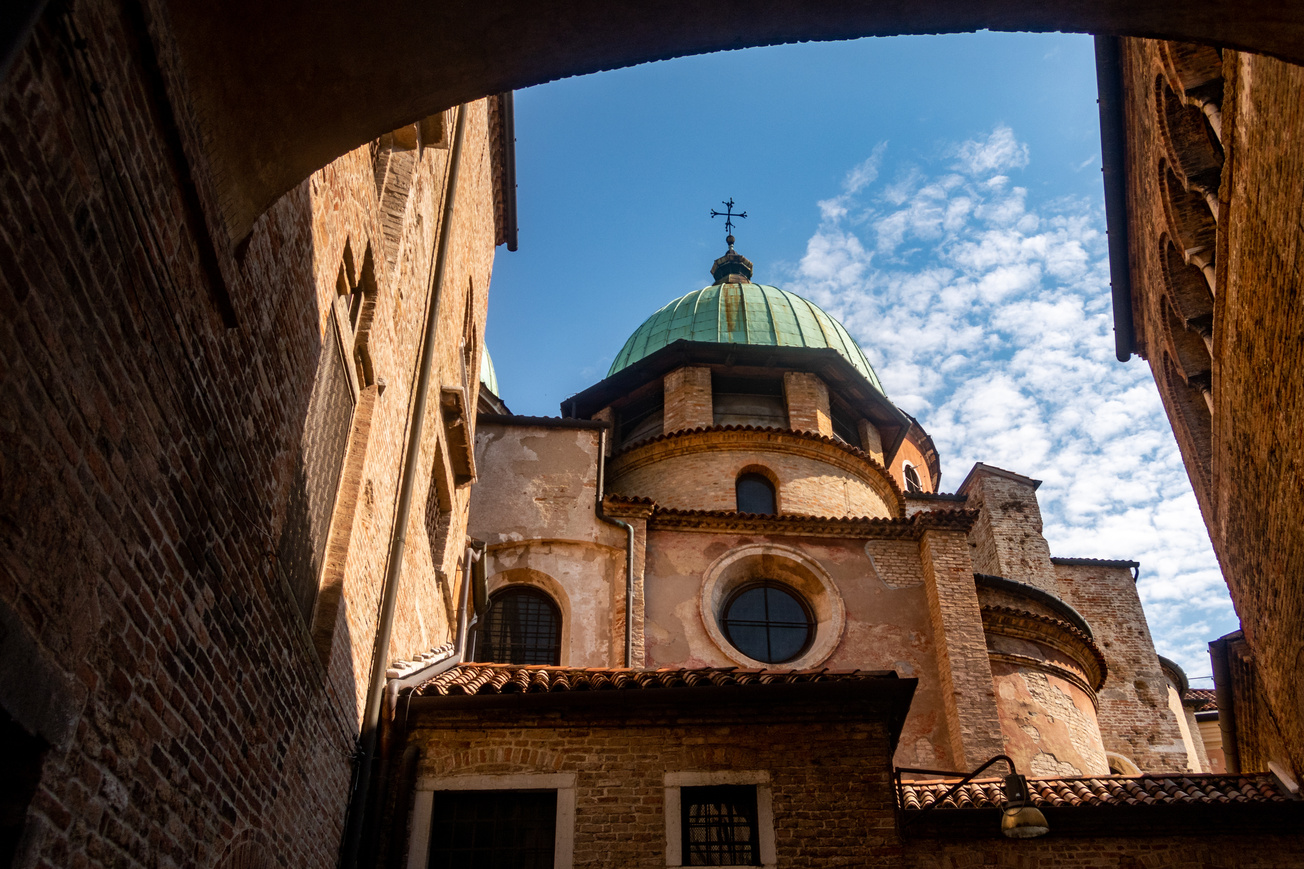
The Fish Market and Treviso’s food and wine traditions
Treviso is a city as historic as it is enjoyable, and there is no better way to experience it than by taking a plunge into its culinary traditions. The perfect place to do this is the Fish Market, located on a small island in the old town. Here, amid stalls full of fresh produce, there is an authentic feeling of daily life in Treviso.
After a visit to the market, stop at a typical osteria to savour the city’s classic dishes: Radicchio di Treviso IGP, often served grilled or in lasagne; sopa coada, a soup made with pigeon and stale bread, a real traditional delicacy; tiramisù, which, as some say, was invented in Treviso and is now one of the world’s favourite desserts.
Some excellent taverns are located in this area and are perfect for a dinner overlooking the water. On summer evenings, one of the best places with outdoor seating in the city centre is the restaurant-wine bar Odeon alla Colonna: dine here under the portico overlooking the canals and with a view of the mill. The menu changes with the seasons, but the tagliatelle al caffè, pork cheek and tiramisù are seasonless classics. In addition, its wine menu will surprise you with its superb selection. Otherwise, if you are craving seafood after your visit to the fish market, check out Muscoli’s: it’s touristy, but the location makes it an ideal summer destination, as it has its own outdoor area on the Pescheria, and is the perfect place to savour cicheti (hors d'oeuvres), octopus and squid.


